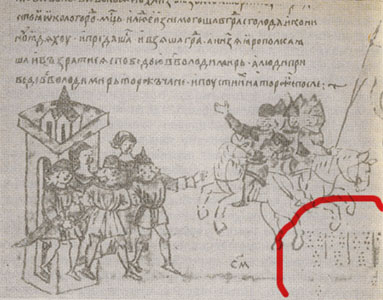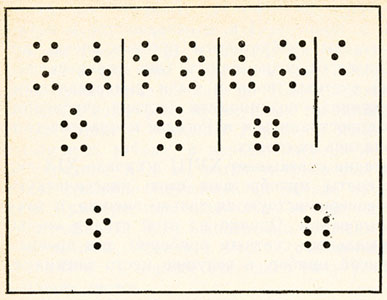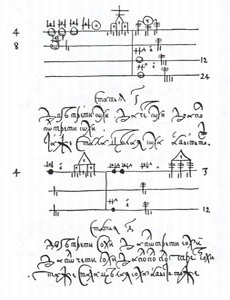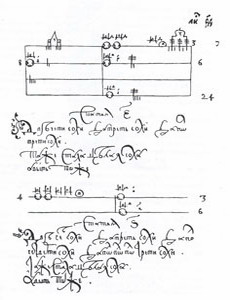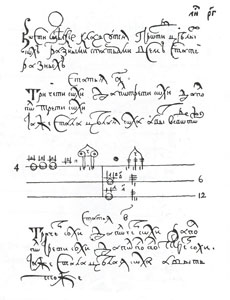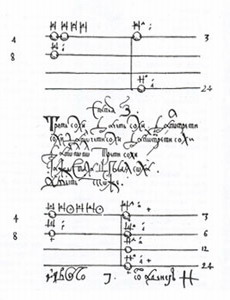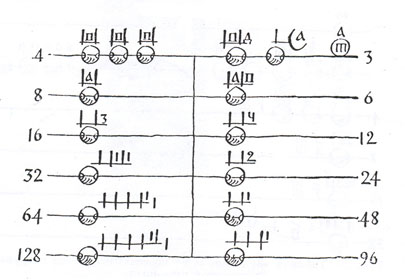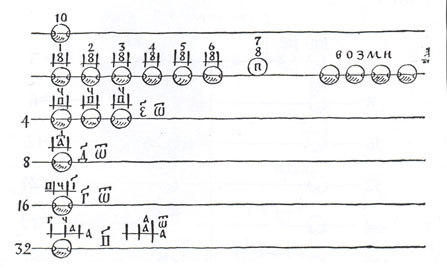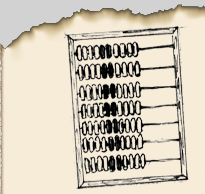


|
The history of Russian abacus goes deep into centuries and though, in fact, there are no reliable evidences about its origin, however some manuscripts of ancient Russian mathematicians (for example the manuscript of the monk Kirik Novgorodets, 1136) contain so difficult calculations, that it is hardly to execute them without a counting device. Then the so-called Radzivill Chronicle manuscript (the end of 15th century) can attract our attention. There is one very interesting miniature in it: an illustration to description of Torzhok siege, which occurred in 1182. It has a group of points separated by vertical lines, and this picture gives us an idea about abacus operations. Unfortunately, the right part of miniature is lost, that is why it is impossible to restore this calculation example.
So, probably, some form of abacus was known and used in Russia, and it was like ancient Greece abacus. In the 16th century an analog of the calculating on the lines method appeared in Russia, which was similar to the calculating on the lines method in Western Europe. Its peculiarity was the use of cherry or plum pits instead of metal jetons. That is why this method got the name stchet kostími (counting with pits). It is interesting because at the same time metal jetons were imported in Russia in huge quantities (more often from Nuremberg). Lots of ancient manuscripts survived, where it was explained how to prepare a desk for calculations, how to execute four arithmetical operations, and how to check up the results. Different tables were drawn for each operation on the desk. The table for multiplication was the most complicated. But there was the same table both for subtraction and division. Pits on the 1st, 2nd, 3rd etc. lines had values 1, 10, 1000 and so on. Pits between lines had values 5, 50, 500 etc. There were the rules for each arithmetical operation in detail, and everyone was followed by examples and explanation drawings.
Here is a scheme of a multiplication operation (66x96=6336) from one of the manuscripts.
|



